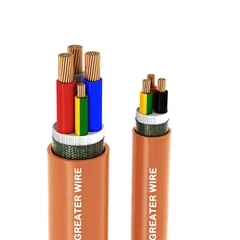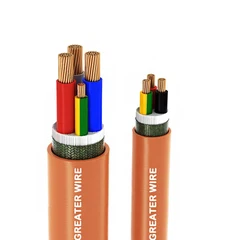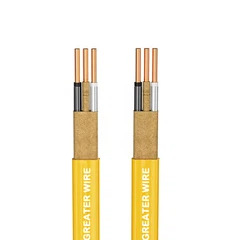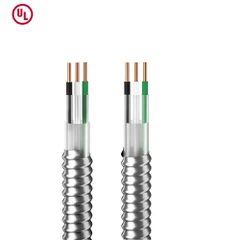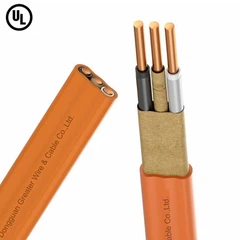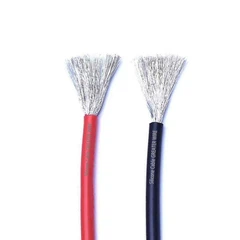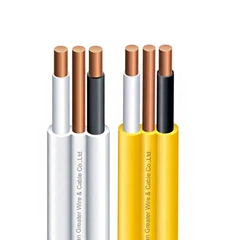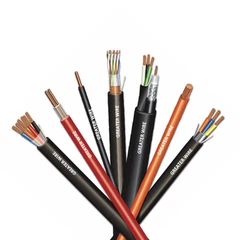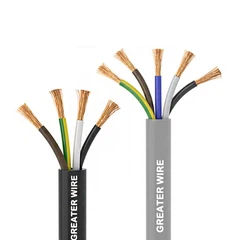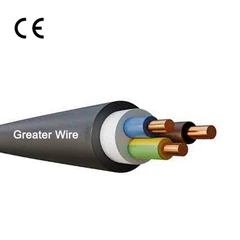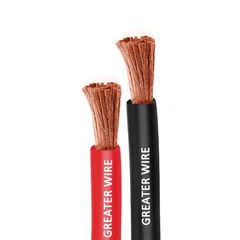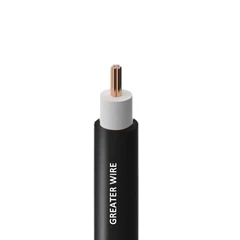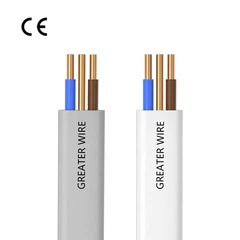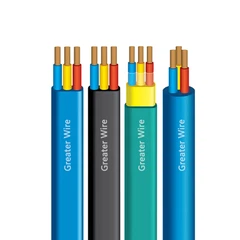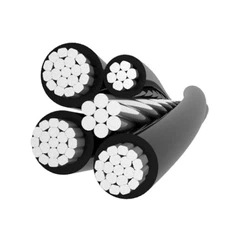In the world of solar energy systems, solar cables and solar wires play an essential role in transmitting electricity from solar panels to other components like inverters, batteries, and charge controllers. One of the most important specifications of solar cables is their operating temperature range, as solar installations are often exposed to extreme weather conditions, from blistering heat to freezing cold. This article explores the operating temperature range of solar cables, its importance in the overall performance and safety of solar systems, and the factors influencing the temperature range of these critical components.
What is a Solar Cable?
Before diving into the temperature range of solar cables, it's important to understand what a solar cable is. A solar cable is a type of electrical wire used to connect the different components of a photovoltaic (PV) system, such as solar panels, inverters, batteries, and charge controllers. Solar cables are designed to handle direct current (DC) electricity generated by solar panels while withstanding harsh environmental conditions.
The Importance of Operating Temperature Range in Solar Cables
The operating temperature range of solar cables is critical because the cables must perform reliably in a wide variety of environmental conditions. These cables are typically installed outdoors where they are exposed to temperature fluctuations, UV radiation, humidity, rain, snow, and sometimes even extreme heat or cold. Therefore, it is essential that the cables maintain their functionality, safety, and efficiency across these temperature extremes.
The temperature at which a cable can safely operate affects its longevity, conductivity, and overall performance. If the operating temperature of the cable is exceeded, it can lead to insulation degradation, conductor damage, increased resistance, and potential failure of the entire solar system. Thus, understanding the temperature range of solar cables is vital for ensuring the optimal operation of solar energy systems and protecting the components from long-term damage.
What is the Typical Operating Temperature Range of Solar Cables?
Solar cables are designed with a specific operating temperature range to ensure their performance under various environmental conditions. While the precise range can vary depending on the type of cable, the materials used, and the manufacturer, most solar cables are built to handle the following temperature ranges:
3.1 Standard Operating Temperature Range
-40°C to 90°C: This is the standard temperature range for most solar cables used in everyday residential, commercial, and industrial applications. This range allows the cables to operate efficiently in environments that experience freezing temperatures in winter and extreme heat in summer.
3.2 Maximum Short-Term Temperature Range
-40°C to 120°C: In certain situations, solar cables can temporarily withstand temperatures outside the typical range, such as when exposed to intense sunlight or high operational currents. The insulation and sheathing materials used in solar cables are designed to handle short-term temperature spikes without suffering permanent damage.
3.3 Maximum Operating Temperature of Solar Cables
90°C: The maximum operating temperature for standard solar cables is typically rated at 90°C. At this temperature, the cable insulation will not break down or lose its ability to protect the conductors and maintain electrical conductivity. Solar cables are designed to operate efficiently and safely up to this temperature without compromising their long-term performance.
3.4 Temperature Resistance of Solar Wire Insulation
The insulation material plays a significant role in determining the overall temperature tolerance of the solar cable. The following materials are commonly used in the construction of solar cables and have varying degrees of temperature resistance:
Cross-Linked Polyethylene (XLPE): Most solar cables use XLPE insulation because of its high resistance to heat, UV, and weathering. It is capable of withstanding temperatures ranging from -40°C to 90°C, and in some cases, up to 120°C for short durations.
Ethylene Propylene Diene Monomer (EPDM): Some solar cables are insulated with EPDM, which provides excellent performance at both high and low temperatures. It can typically handle temperatures from -40°C to 90°C, with higher tolerance for short periods.
How Temperature Affects Solar Cable Performance
The operating temperature range of solar cables is not just a theoretical limit but directly impacts the performance and safety of solar energy systems. Here's how temperature can affect solar cable performance:
4.1 Effects of High Temperature on Solar Cables
Insulation Degradation: Prolonged exposure to high temperatures can cause the insulation material of the solar cable to degrade, leading to the weakening or melting of the protective layer. This can expose the conductors to external environmental factors, leading to potential short circuits or electrical fires.
Increased Electrical Resistance: Higher temperatures increase the electrical resistance of the wire, which may lead to power losses and reduced system efficiency. In solar power systems, this can result in energy loss and a decrease in overall system performance.
Expansion of Conductors: Metals expand when heated. If the cable is exposed to high temperatures for extended periods, the conductors may expand, causing potential strain on the insulation and even resulting in physical damage over time.
4.2 Effects of Low Temperature on Solar Cables
Brittleness of Insulation: At low temperatures, the insulation material can become brittle, increasing the risk of cracking and damage. This may expose the conductors, leaving them vulnerable to environmental factors such as water and physical damage.
Reduced Flexibility: Solar cables are designed to be flexible for easy installation. However, in extremely cold conditions, the flexibility of the cable decreases, which can make installation more difficult and increase the risk of damage during handling.
Standards for Solar Cables and Temperature Range
Several international standards ensure the performance and safety of solar cables in a wide range of temperature conditions. The following standards are commonly referenced in the industry:
5.1 IEC 62930 (International Electrotechnical Commission)
IEC 62930 specifies the requirements for the construction, testing, and performance of solar cables, including their temperature ratings. According to this standard, solar cables should be able to operate between -40°C and 90°C, ensuring that they can handle a wide range of environmental conditions.
5.2 UL 4703 (Underwriters Laboratories)
UL 4703 outlines the requirements for photovoltaic wire and cable. According to this standard, solar cables used in North America should be rated for a temperature range from -40°C to 90°C, with some exceptions for short-term exposure to higher temperatures.
5.3 EN 50618 (European Standard)
This standard governs the requirements for cables used in photovoltaic systems in Europe. It specifies that cables should withstand temperatures between -40°C and 90°C and should be resistant to UV radiation, weathering, and mechanical stress.
Factors Affecting the Temperature Performance of Solar Cables
Several factors can influence the temperature performance of solar cables, including environmental conditions, the quality of materials used, and the installation process. Here are some key considerations:
6.1 Ambient Temperature
The temperature of the surrounding environment plays a crucial role in the overall performance of solar cables. For example, a system installed in a desert environment with high temperatures will put more stress on the cables than a system installed in a cooler, temperate climate.
6.2 Exposure to Sunlight
Solar cables are often exposed to direct sunlight, which can cause their temperature to rise above ambient levels. Choosing cables with high UV resistance and high-temperature tolerance can mitigate this effect.
6.3 Installation Conditions
Improper installation, such as tightly coiling cables or burying them too deep without sufficient ventilation, can cause the cables to overheat. Ensuring that cables are properly routed and have adequate spacing is essential for maintaining their temperature range.
6.4 Current Carrying Capacity
The amount of current flowing through the solar cables also affects their temperature. Higher currents cause more heat, so selecting the appropriate cable size for the current load is important for keeping the temperature within safe limits.
GREATER WIRE is a leading cable company specializing in the manufacturing and supply of high-quality cable products. With years of industry experience, we offer a wide range of cables, including America UL cables, Australia SAA cables, VDE cables, and TUV cables, catering to various applications such as industrial, commercial, and residential use.
Contact us today for more information on our products and services. Our dedicated team is ready to assist you with all your cable needs.

